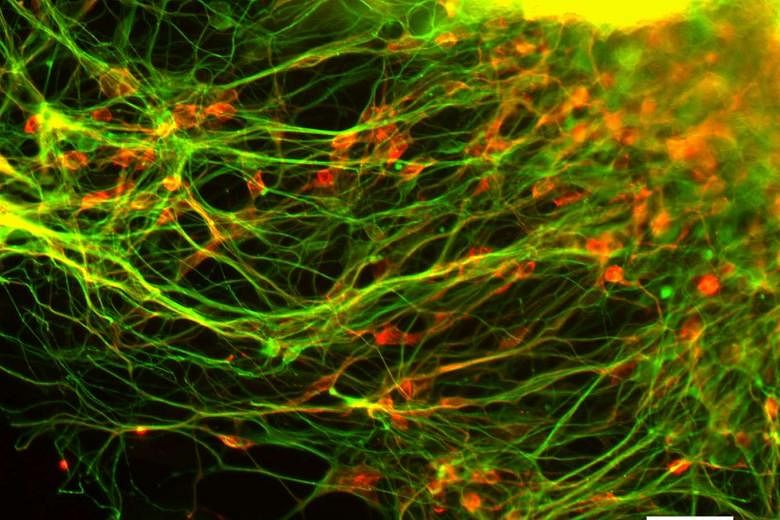Scientists in Singapore have potentially found a way to repair damaged brain cells in sufferers of Parkinson's disease by using stem cells from cord lining - spelling a possible breakthrough in combating the progressive neurological condition for which there is no effective treatment.
The team from the National University of Singapore (NUS) and the National Neuroscience Institute (NNI) used a technique developed by Nobel laureate Shinya Yamanaka to turn mature cells into "induced pluripotent stem cells" capable of turning into any cell the body needs.
It successfully used stem cells derived from the lining of the umbilical cord to generate new dopamine- producing nerve cells in mice.
If successful in humans, it could be the first treatment to target the root cause of the disease, which afflicts three out of every 1,000 people aged over 50 here - costing each patient an estimated $11,000 in medical bills per year.
People afflicted with Parkinson's disease progressively lose control of their movements due to a disruption in the brain's production of dopamine neurons, which send signals to other nerve cells.
If these neurons can be re-generated, it could possibly reverse the effects of the disease.
Associate Professor Lim Kah Leong of the NNI and NUS Yong Loo Lin School of Medicine, one of the lead scientists of the study, said an advantage of using cord lining cells is that they are potentially immuno-privileged - that is, the chances of rejection in a recipient are low.
They are also purer then cells taken from the patient.
"If you were to convert cells from a 60- or 70-year-old individual, it is likely the cells will accumulate a lot of gene mutations induced by the environment," he explained. Such cells might be less ideal genetically for use in the clinical setting.
Earlier attempts to treat the disease saw patients in the West transplanted with dopamine-producing cells from aborted foetuses, but this was discontinued due to ethical issues and side effects, he pointed out.
Cord lining cells - which come from a baby's umbilical cord which is usually discarded - are abundant and safe, with no reports of tumour formation or adverse effects so far.The team has collaborated with home-grown biomedical firm CellResearch Corporation, and is looking at the next stage of animal trials.
Samantha Boh

